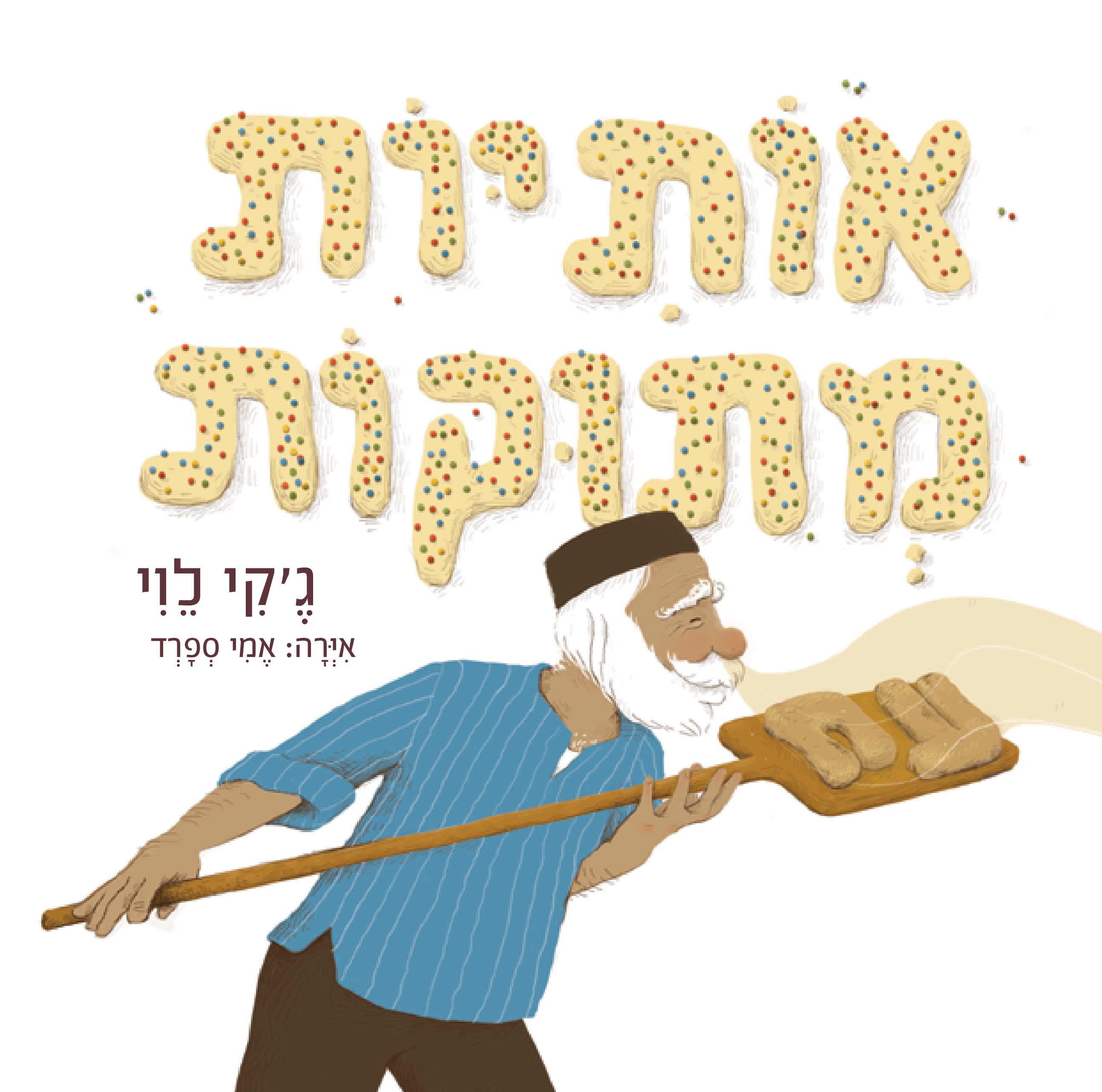אותיות מתוקות
מאת: ג'קי לוי | איורים: אמי ספרד
תרגום לרוסית של ההצעות להורים המודפסות בדפים האחרונים של הספר
Сладкие буквы
Джеки Леви
"Сладкие буквы" – это рассказ в рассказе. Это рассказ о Галь и ее папе, о воспитательнице Рухаме и о детях ее детского садика – и еще один рассказ о сладком дедушке Рафаэле, который жил давным-давно в далекой стране. Медовый вкус букв алфавита объединил настоящее с прошлым и Галь со сладким дедушкой Рафаэлем.
Дорогие родители!
"Человек должен учиться в таком месте, которое согревает его сердце" (Вавилонский Талмуд, Масехет Авода Зара, 19)
Первая встреча детей с буквами – это важная веха в их развитии и приобщении к миру взрослых. Умение читать и писать открывает перед человеком широкий мир и позволяет ему приобретать знания, познавать себя и быть чутким по отношению к другим.
Из поколения в поколение в разных местах передавались обычаи празднично отмечать первую встречу детей с буквами. Этот праздник превращал учебу в положительный и радостный опыт, запоминавшийся детьми на долгие годы. У каждого сообщества свои обычаи, но общим для всех является желание подчеркнуть сладкий вкус учебы.
Занятия в кругу семьи
- Стоит полистать книжку и обратить внимание на игру с цветом на иллюстрациях. Какие из них цветные, а какие черно-белые? Можно спросить детей, почему, по их мнению, художница решила различить между настоящим и прошлым? И что происходит с цветом на иллюстрациях в конце рассказа? Если у вас есть старые черно-белые фотографии, которые рассказывают о семейных корнях, можно показать их детям и вместе поискать на них членов семьи раньше и сейчас.
- Галь узнает, что получила имя в честь своих двух бабушек. А ваши дети знают историю своих имен? По следам прочитанного вы можете рассказать им о значении их имен и о том, как и почему они были выбраны, а также о происхождении их имен.
- Знакомы ли вам слова и мелодия песни "У нас в деревне Тудра" ("Эцлейну бэкфар Тудра"), слова которой написал Йегошуа Соболь, музыку – Шломо Бар, а первым исполнил ансамбль "Естественный выбор" ("А-Брера А-Тивъит")? Вы можете найти ее по адресу:
http://www.youtube.com/watch?v=mw7AyqXC-FI в исполнении Рами Броха и Шломит А-Гоэль-Тригер
и спеть вместе.
- Как и Галь, многие дети любят слушать рассказы о "давным-давно". Помните ли вы интересные события со времен вашего детского сада или школы? Можно поделиться с детьми воспоминаниями детства и семейными традициями, связанными с учебой.
- "Человек должен учиться в таком месте, которое согревает его сердце" - Маленькие дети учатся, когда они делают то, что им нравится, как, например, когда они лижут буквы, смазанные медом. Есть много способов выучить алфавит, например, можно составлять имена и слова из разных подсобных материалов, вырезать буквы из газет, узнавать знакомые буквы на вывесках и упаковках, играть в словарные игры и т.п. Главное учиться с увлечением!
Закончим наши предложения рецептом сладкой выпечки в виде букв.
Состав:
100 грамм размягченного масла
2/3 стакана сахара
1 яйцо
1 чайная ложка ванили
2 стакана муки
1 чайная ложка разрыхлителя
1/2 чайной ложки соли
Приготовление:
1. Размешиваем в миске сахар и масло до тех пор, пока не получится однородная немного набухшая масса.
2. Добавляем, размешивая, яйцо и ваниль.
3. В другой миске перемешиваем сухие ингредиенты: муку, разрыхлитель и соль.
4. Соединяем обе смеси и месим до получения рассыпчатого теста. Скатываем его в один комок, заворачиваем плотно в пластик и кладем на час в холодильник.
5. Через час вынимаем тесто из холодильника, раскатываем его на посыпанной мукой поверхности и нарезаем печенья в форме букв.
6. Выпекаем в печи, разогретой до 180 градусов в течение 10 – 12 минут до тех пор, пока печенья не получат золотистый цвет со всех сторон.
















